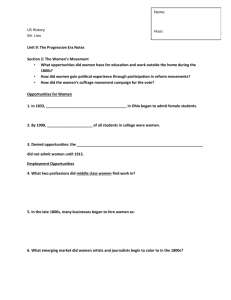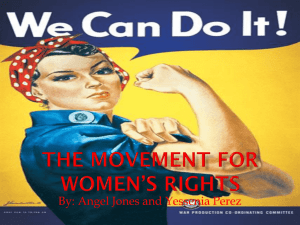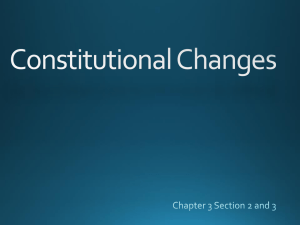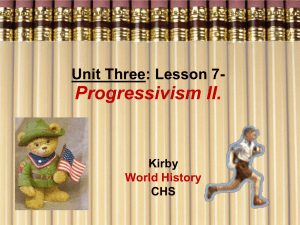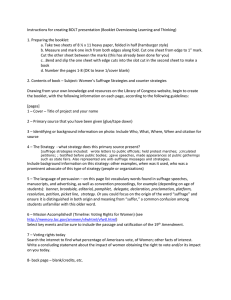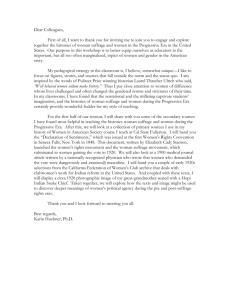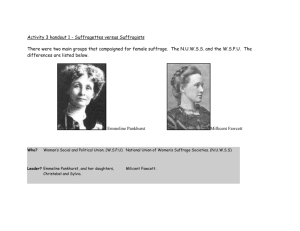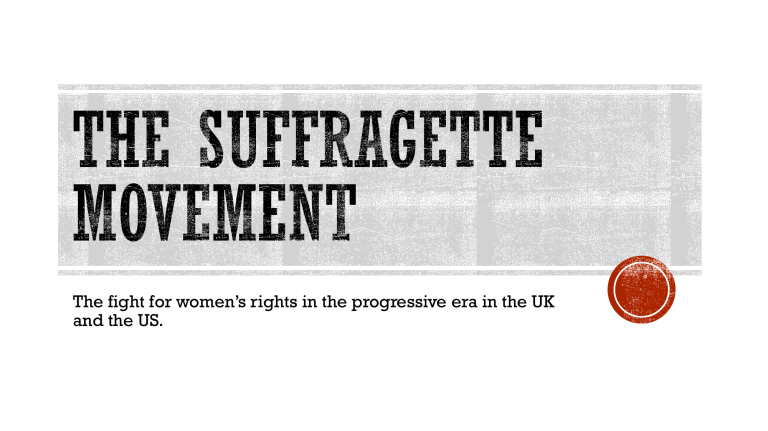
The fight for women’s rights in the progressive era in the UK and the US. The Suffragette Movement got its name from the word ‘Suffrage’ the right to vote in political elections. This movement is a very important event in history for women, as it led to equality in society. Although gender-based discrimination still exists, women are much better-off today, thanks to this movement. While there is still much work to be done, it all started with this movement in the early 19th century. The major victory of the movement occurred in 1920 with the 19th Amendment to the US Constitution said that suffrage "shall not be denied or abridged by the United States or by any State on account of sex.” It is believed that this historic movement began at the Seneca Falls Convention of 1848. Although suffrage was only one of the many topics about equality that were discussed here among many men and women representatives, women suffrage went on to be the most important, as history tells us. This movement was led primarily by the “National American Woman Suffrage Association” (NAWSA), which was founded by the merging of two organisations – National Women’s Suffrage Association (NWSA) and American Woman Suffrage Association (AWSA). These two organisations were initially rivals in the subject of the 15th Amendment, which gave suffrage to African American men, but did not to women. In the UK, the movement began when philosopher John Stuart Mill petitioned to the Parliament to grant suffrage to women. That year, many committees for women’s suffrage, which merged in 1897 into the National Union of Women's Suffrage, led by Millicent Garret Fawcett. Susan B Anthony Founder of the NWSA Elizabeth Cady Stanton Founder of the NWSA Lucy Stone leader in the American Woman Suffrage Association *1855 Marriage Ceremony Millicent Garret Fawcett President of the National Union of Women's Suffrage Emmeline Pankhurst Founder of the Women’s Social and Political Union (WSPA) Carrie Chapman Catt President of NAWSA after Anthony and cofounder of the Women’s Peace Party and International Woman Suffrage Association Alice Paul Proposer of the Equal Rights Amendment after 1920 The most prominent reason is that they were not seen as equal to men. The role of women was limited to managing the household, being a good wife, mother and daughter, and bearing children. It was believed that business and politics were the ‘areas of men’. Therefore, women were not granted suffrage. In fact, African American men were given the right before them! The second reason was that women would vote for Prohibition. This reason is applicable for the 1910s, as the alcoholic men were against the idea of Prohibition, which women supported as they were affected adversely by their drunk husbands. Map of voting rights for women before 1920. It took over a century of protests, starting in 1792, when Mary Wollstonecraft published her book ‘A Vindication of the Rights of a Women’. The 19th Century saw many developments in the UK and the US, with women protesting, picketing and petitioning. Women would go to voting booths and file lawsuits if they were not allowed to vote. The various organisations that were formed, like NAWSA, were very vocal in their aims. Similarly, Susan B Anthony and Elizabeth Cady Stanton led in the US with their speeches and protests. Women like Emmeline Pankhurst and her daughters – Christabel and Sylvia Pankhurst led the movement in the UK. Frustrated by their same state, they turned more rough, giving rise to a more ‘militant’ movement, with riots and civil disobedience. During WW1, they stopped and started to support the war effort to show their patriotism, in order to get support from political leaders. Women could vote in the US after th 19 1920 with the signing of the Amendment. Women over the age of 30 could vote in the UK from 1918, and suffrage for men and women was made equal in 1928. https://www.thoughtco.com/womens-suffrage-activists-3530534 http://teacher.scholastic.com/activities/suffrage/history.htm https://www.khanacademy.org/humanities/us-history/rise-to-world-power/1920s- america/a/the-nineteenth-amendment https://www.dailykos.com/stories/2018/8/26/1791014/-August-26th-The-19th- Amendment-Women-s-Right-To-Vote-Adopted-Into-The-US-Constitution
